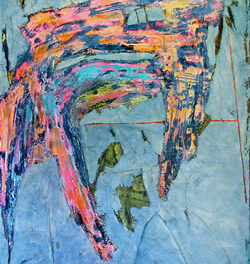Heinrich Ignaz Franz von Biber: Mensa Sonora, Batallia for violin, strings, & basso continuo; Baroque Band, Garry Clarke, dir.; Çedille CRD 90000 116, © 2010, 56:50, $16.00.
These works are both sub-genres of occasional music, although the specific occasions for which they were composed are not known. Both types go back to the Renaissance for their creation and development, but these examples, the latter dating from 1673 and the former from ca. 1680, are among the earliest of the Baroque era. Perhaps the most famous works to accompany a meal are Georg Philip Telemann’s Tafelmusik from 1733 and Handel’s 1717 Water Music composed for George II for a royal banquet on a barge on the Thames. In between, there are Michel Richard Delalande’s 12 Suites of Symphonies pour les Souper[sic.] du Roi composed for Louis XIV ca. 1703.
The Mensa Sonora consists of 6 “Pars,” mostly of 7 movements each (No. 2 has 6 and No. 3 only 5), mostly bearing the names of dance rhythms, but interestingly, unlike the other aforementioned sets, 3 begin with “Sonatas,” 2 of which end with “Sonatinas,” one begins with an “Intrada” and ends with a “Retirada,” and some have movements entitled “Balletto.” Most of the movements are under 2 minutes long, several are under 1 minute, with a few under 30 seconds that seem to end abruptly as soon as they’ve started; only 2, both ciaconas, slightly exceed 3 minutes. There’s not much time for any development in such short sound bites; in the halls where these works were performed, the meat was on the table, not in the musical accompaniment to the meal. There are, nonetheless, some lovely melodies, such as the sarabanda on track 12 and the sonata of track 19, and some, such as the allamanda on track 20 and the balletto on track 27, have attention-getting rhythms. The variety holds your attention as much as any individual musical element.
The 8:49 eight-movement Batallia is a sort of shorthand version of this genre, its longest movement being the opening 1:54 sonata. The actual fight arrives only in the penultimate movement and is followed by the “Lamento der Verwundten Musquetirer.” Biber (1644-1704) calls for some interesting sound effects, especially for his time, in the score: striking the violins with the bows and placing paper on the strings of the bass, which serves as the drum in the march and provides cannon shots for the battle, for example, according to the fine notes by Clarke in the booklet. The listener will think there are instruments other than strings in the mix, so cleverly are they simulated. The booklet uses a non-standard order for the presentation of the information by putting the credits on the inside of the front cover, like the copyright page in a book, far more logical than their usual burial on the inside of the back cover. The cover features a reproduction of an attractive 17th century Flemish painting of a meal with musical accompaniment on lute and flute – could one not have been found showing violins or fiddles at least?
The notes make much of the use of more than one instrument per part, contrary to current early music performance theory and practice, making the sound a bit larger than chamber music if not truly orchestral. The Baroque Band has 9 violins, including founder Clarke’s, 2 violas, 2 celli and 1 bass with harpsichord continuo for the Mensa Sonora, and performs standing in the photo. For the Batallia, the violins are reduced by 4. There is no question that this gives the music a more full-bodied sound and improves its balance and effect for the listener, whether s/he accepts Clarke’s hypothesis about the historical likelihood of this size group of not.
The performance is lively, sprightly, clean, and precise. These works are the background music of yore, charming and pleasant, if not striking or memorable, entertaining if not profound, and it is good to hear them and have them available on a recording with such fine sound quality. One might well enjoy using this, the group’s début CD, as background music for a 21st century feast at home with invited guests. It could be a welcome change from the more standard lush Romantic strings or quiet piano fare.











